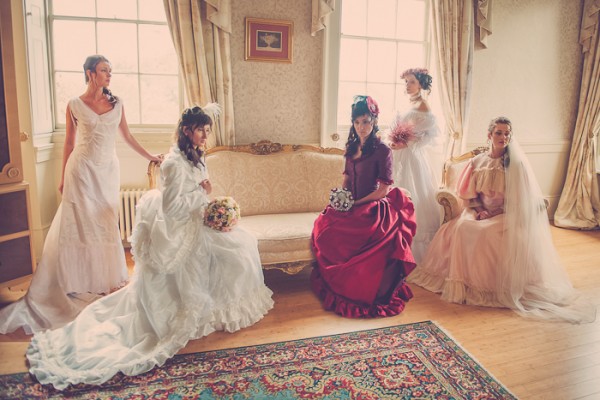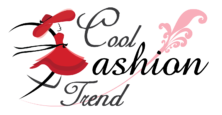“You were made perfectly to be loved, and surely I have loved you, in the idea of you, my whole life long.”
So went the poet Elizabeth Barrett Browning in one of the most quotable sound-bites of the Victorian era, a time truly awash in romance. Still decades away from suffrage and gender equality, the average Victorian woman aspired for nothing more than marrying into fortune. More than anything, she looked forward to romance like her life depended on it.
Are you interested, per chance, in a Victorian-themed wedding? Wax nostalgic with this guide.
Flowers
Like the literature of the era, the Victorian wedding is characteristically flowery. If you should take any advice, pull out all the stops in blossomy décor. Instead of rolling out a red carpet, carpet the wedding aisle with petals. Deck the church and reception area with roses, rosemary and myrtle. Make sure the bridal bouquet is in a metal cone called a tussy mussy.
Bridal attire
One lasting legacies of the Victorian era is the use of white on bridal dresses. Before Victorian times, the white wedding dress was seen as a sign of poverty, and women would rather wear their best green, brown and black frocks. Then on her 1840 wedding to Prince Albert, Queen Victoria wore an ivory dress; bridal fashion has never been the same since.
 A quintessentially Victorian wedding dress would have a fitted bodice high in the neck and sleeves that reach to the wrists. The skirt should fall over hoops and petticoats. The veil would be made of diaphanous gauze, cotton, lace, or silk tulle and touch the feet. Most importantly, the veil must be suspended from a headdress of flowers, preferably maiden-blush roses and orange blossoms. The bride would also wear white kid gloves and white brocade or satin slippers.
A quintessentially Victorian wedding dress would have a fitted bodice high in the neck and sleeves that reach to the wrists. The skirt should fall over hoops and petticoats. The veil would be made of diaphanous gauze, cotton, lace, or silk tulle and touch the feet. Most importantly, the veil must be suspended from a headdress of flowers, preferably maiden-blush roses and orange blossoms. The bride would also wear white kid gloves and white brocade or satin slippers.
Groom’s attire
A Victorian groom would wear a morning dress with a dark blue, claret or mulberry frock coat, a cravat, and white gloves. His lapel typically held a large boutonniere of lilies, gardenias or sprigs. He was seldom seen without a black top hat.
Venue
Nuptials of the era often took place in church, i.e. the parish of the bride. Otherwise, the setting might be at home, ideally the backyard garden of a manor. Couples would also wed at the park or botanical garden.
Date and time
Victorian culture was steeped in superstition. True to form, brides would choose Mondays and Tuesdays for the wedding, as these days supposedly bring health and wealth, respectively. Wednesday was the most auspicious time to marry though, while Thursday, Friday, and Saturday signified “crosses, losses, and no luck,” respectively. Sunday would be blasphemous.
Laws of the time stipulated that ceremonies must take place in the morning. The best time for a Victorian wedding was between 10 am and 12 pm. Later laws allowed functions as late as 3 pm, while couples in hotter climes held the event in the cool evening. Of course, no rule today stops you from holding a wedding beyond morning.
Good luck
In keeping with the era’s superstitious bent, the bride and groom would exchange vows under such symbols of good luck as a bell or wishbone. After the ceremony, guests showered the newlyweds with birdseed to promote fertility.
Ring
Victorian wedding rings equated to gold bands engraved with the couple’s initials and the date of the wedding. Bands that drop during the ceremony were believed to ward off evil spirits.
Horses
If you want a truly Victorian wedding, eschew the cars for carriages. A carriage pulled by four white horses epitomised weddings then. Meanwhile, rich couples of the era were known to ride on a carriage drawn by a grey horse.
Reception
Victorian-era wedding receptions took place at the bride’s home. Ushers were tasked to guide guests to the couple, who would stand flanked by the bridesmaids in an ornately decorated location at home. In the reception area, the bridal entourage were traditionally the only ones seated; everyone else had standing room. Tables were prepared in larger spaces though.
Entertainment
It was a common view at the time to treat the wedding as an honour in itself. Therefore, no live entertainment was necessary. However, more fulsome Victorian weddings were marked with evening merrymaking.
To channel the gaiety of the era, hire a wedding band instead of a DJ, as the latter would sound very anachronistic. Have them garbed in costumes of the period, for good measure.
Food
Since Victorian weddings typically took place in the morning, guests were usually treated to breakfast fare. Menu often included oysters, galantines, and cold game, while simpler preparations consisted of tea, scones, petit fours, and fresh summer fruits.
Victorian newlyweds’ choice confectionery was a multi-tier Victoria sponge with raspberry jam and whipped vanilla cream: a favourite of the Queen herself.
Cake
It was the height of Victorian tradition to serve a trio of wedding cakes, two for the bride and groom and one as the centrepiece. The latter was always dark fruitcake festooned with orange blossoms. The cakes usually held rings, pennies, thimbles, buttons, and other charms for guests to uncover. Every guest left with a boxed slice of cake.
Party favours
To complete your Victorian wedding, distribute oh-so-Victorian keepsakes like cameo brooches, lace handkerchiefs, and vintage china teacups. Another idea is to give them Victorian crackers that open up to reveal knick-knacks. Or you may give away paper fans emblazoned with love quotes, since the era was typified by much fanning.
